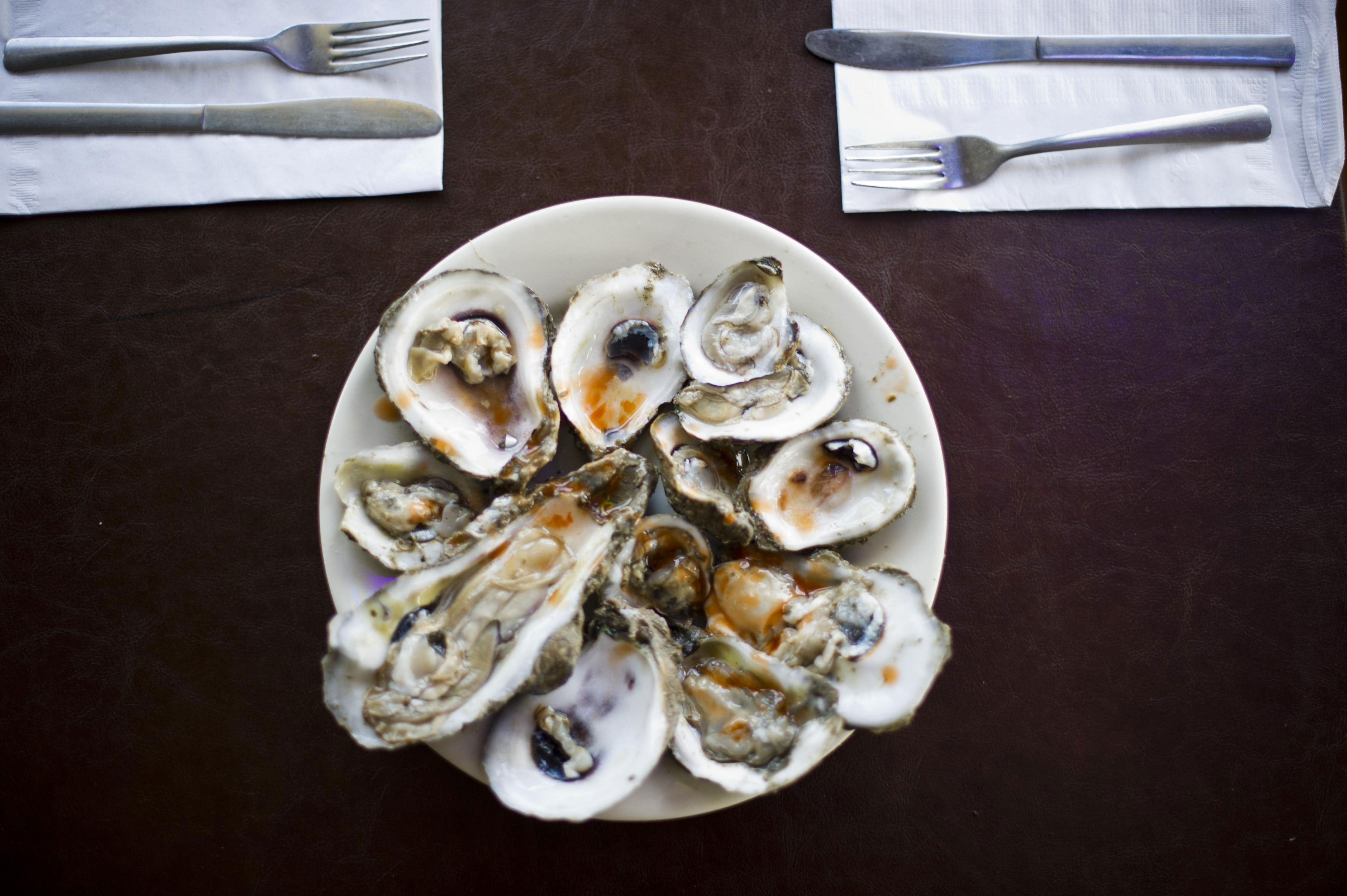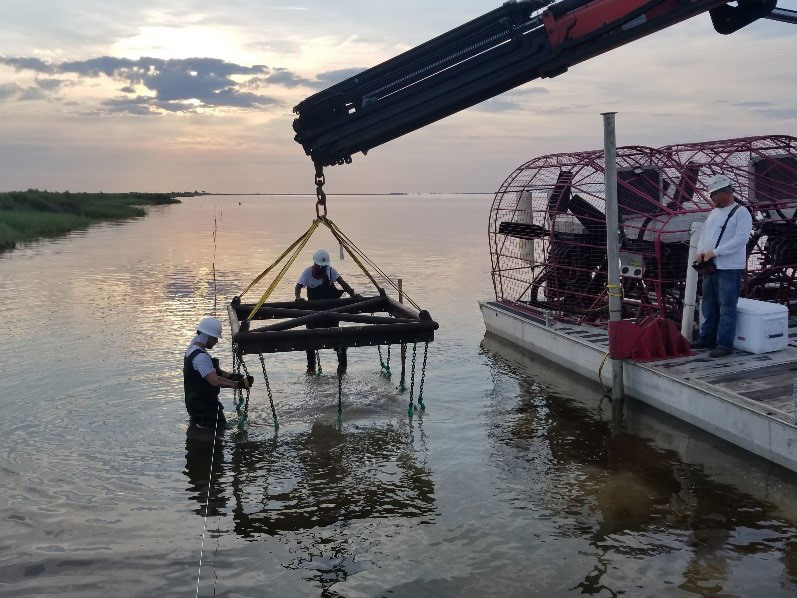Healthy Rivers, Delicious Oysters
A new project aims to understand how climate change, upstream water use, and water management decisions affect oysters in the Gulf of Mexico
OysterFlows
Visit the OysterFlows App and learn more at freshwaternetwork.org.
It is an indisputable fact that the best and most delicious oysters are found in the Gulf of Mexico. Nobody of sound mind would suggest that better oysters could be found in the Chesapeake Bay, or Wellfleet, or Puget Sound, or anywhere else. The variety of Eastern oyster found in the Gulf, perfectly large and tender with a mild and delicate taste, is unique and superior to those found anywhere else in the world.
Even those who might, for some unknown reason, disagree with that sentiment know that growing the perfect oyster depends on a unique set of conditions. How much salt is in the water is just as important as the temperature. And, of course, the taste of these natural water filters is heavily dependent on the health of the water flowing through their habitat. Those who harvest wild oysters, and those who farm them along the coast, do their best to control for these conditions.
And yet, today there is virtually no easy way to understand or prepare for how changes in the amount and timing of water flowing into the Gulf of Mexico will affect the health (and taste!) of Gulf oysters from Florida to Texas.

Oysters Matter
Oysters, of course, are not important solely for their service to human stomachs. From filtering water (an Eastern oyster can filter up to 50 gallons a day) to providing important habitat, and supporting one of the last viable oyster fisheries in the world (the Sabine River Basin in Louisiana contains the largest intact natural oyster reef in the Gulf, and possibly the world), oyster and reefs are a critical component of a healthy ecosystem.
They are also vital to a healthy economy. Seventy percent of the oysters caught in the US are from the Gulf Coast. In Louisiana alone, the commercial oyster industry accounts for almost 4,000 jobs and has an estimated impact of $317 million annually. In Mississippi, it is estimated that the oyster industry generates about 562 jobs each year and an annual income of $9 million.

Water Matters
The truth is, the oyster you eat in Wellfleet, or the Chesapeake Bay or most anywhere in the US is most likely an Eastern oyster. What makes each of them special are the growing conditions—such as salinity and temperature—both of which can be dramatically impacted by the amount of freshwater flowing into growing areas. In the Gulf of Mexico, as elsewhere, climate change is presenting a tremendous challenge to growing healthy oysters. Changing weather patterns are affecting the waters both in the Gulf and, perhaps more importantly, upstream.
Upstream waters flowing into the Gulf of Mexico, primarily through the Mississippi River Basin, are crucial to a healthy oyster habitat. Increased water flowing into the Gulf as a result of climate change—and decisions made upstream to increase or decrease flows based on the amount of water coming through the system—have a dramatic impact.
However, in many river basins across the Gulf, tools do not exist to assess upstream flows in the context of oyster health. Without these tools, it is impossible to develop integrated river management plans, make smart and correct investments in oyster restoration, or facilitate climate adaptation for Gulf oysters and the communities that depend on them.

OysterFlows
In 2015 The Nature Conservancy (TNC) began working with RT International (RTI) to better understand upstream water flows. The resulting information and resources allow users to model different water flow scenarios and explore results and ecologically-relevant flow metrics to better understand current conditions and future climate change and human water use scenarios.
The work evolved into a tool that models the effect of upstream river flows on oyster health in Gulf of Mexico estuaries. The result was the first generation OysterFlows app, which integrates coastal resilience and freshwater data into a tool that allows for the best decision making to preserve oyster habitat. OysterFlows, which uses a combination of modeled flows, downstream salinity monitoring data, and an optimum salinity-curve model, is currently developed for two rivers; the Sabine River basin and the Calcasieu River Basin. OysterFlows provided, for the first time, a tool to easily (and virtually) consider different river flow scenarios and the potential impacts on oysters in SW Louisiana.
In 2020, TNC and RTI secured funding from the National Academy of Science to expand the OysterFlows project to other Gulf estuaries with oysters that are sensitive to freshwater disturbance. The funding will allow TNC and RTI to both improve and expand the OysterFlows app. The funding will allow researchers to incorporate climate change and upstream water-use impacts to future river flows. This in turn will inform hundreds of millions of dollars of future investments in oyster restoration across the Gulf in areas where oysters cannot survive without adapted freshwater management.
The timing for this new research could not be better. Gulf oysters are facing increased freshwater impacts due to recent events such as Hurricane Harvey and the release of water from The Bonnet Carré spillway, which significantly impacted Mississippi’s estuarine environment. Further, inland flooding across much of Louisiana in recent years increased discussion about modifying river and stream channels and proposed impoundments to prevent flooding. These water-management decisions will impact water quantity, downstream salinities and ultimately, oysters in Louisiana and Mississippi. These types of discussions are increasing across the Gulf og Mexico as rainfall and storm intensity increases.

Looking Ahead
There is much at stake for the human and natural communities of the Gulf. The OysterFlows project will bring to the Gulf a practical tool that can help to ensure that decisions made about how to manage flows are informed by sound science and consider impacts to coastal habitats, wildlife and communities. It will also help ensure that Gulf oysters retain their status as the best oysters in all the land.
